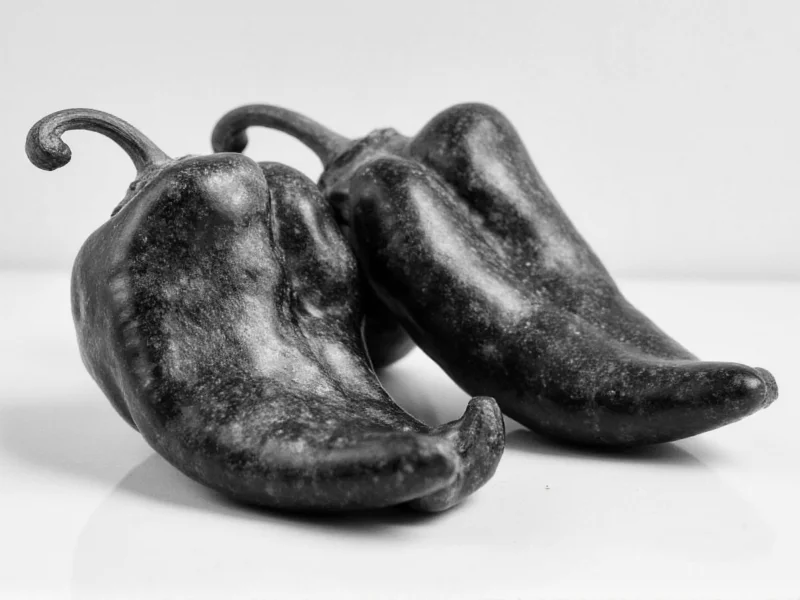Understanding the distinction between black and white pepper is essential for home cooks and professional chefs alike. Both spices come from the same tropical vine native to South Asia, yet their processing methods create dramatically different flavor experiences. The choice between black and white pepper can significantly impact the taste, appearance, and overall success of your culinary creations.
The Processing Difference: From Berry to Spice
The journey from pepper berry to your spice rack reveals why these two varieties taste so different. Black pepper begins as green berries that are picked before full ripening. These berries are then sun-dried, causing them to shrivel and turn black as enzymes react with the air. The drying process develops piperine, the compound responsible for pepper's characteristic heat and complex flavor notes including floral, woody, and citrus elements.
White pepper undergoes a more involved process. Ripe red pepper berries are soaked in water for about a week, which ferments and softens the outer layer. This outer layer is then removed through rubbing or mechanical means, leaving only the inner seed. The cleaned seeds are then dried, resulting in the pale color and different flavor profile of white pepper.
Flavor Profile Comparison
When comparing black pepper versus white pepper, the flavor differences are substantial:
| Characteristic | Black Pepper | White Pepper |
|---|---|---|
| Heat Level | More pronounced, sharper heat | Milder, more subtle heat |
| Flavor Notes | Complex: floral, woody, citrus, earthy | Simpler: earthy, musty, slightly fermented |
| Aroma | Strong, pungent, immediately noticeable | More subtle, less aggressive |
| Aftertaste | Bright, lingering warmth | Longer, more earthy finish |
Culinary Applications: When to Use Each Variety
The choice between black pepper and white pepper isn't merely aesthetic—it affects both flavor and presentation. Professional chefs select between these pepper varieties based on specific culinary requirements.
Black pepper shines in most savory applications where its robust flavor can enhance the dish. It's ideal for:
- Steak seasoning and meat rubs
- Dark sauces where visual appearance isn't critical
- Roasted vegetables that benefit from its complex notes
- Spice blends like garam masala and quatre épices
- Home grinding for maximum flavor impact
White pepper serves specific culinary purposes where its characteristics provide advantages:
- Light-colored sauces and soups (béchamel, velouté, cream sauces)
- Seafood dishes where black specks would be visually distracting
- Traditional European dishes like German sauerbraten
- Chinese cuisine, particularly in delicate stir-fries and wonton fillings
- Situations where a milder, earthier pepper flavor is desired
Nutritional Differences and Health Benefits
Both black and white pepper contain piperine, which enhances nutrient absorption, particularly of curcumin in turmeric. However, black pepper generally contains higher concentrations of beneficial compounds because it retains the berry's outer layer, which contains additional phytochemicals.
Research suggests that black pepper may offer slightly greater antioxidant properties due to the presence of compounds in the fruit's skin that are removed during white pepper production. Both varieties support digestion and have anti-inflammatory properties, but the differences in nutritional content are relatively minor for typical culinary usage.
Storage Recommendations for Maximum Freshness
To preserve the flavor of both black and white pepper, proper storage is essential. Whole peppercorns maintain their potency significantly longer than pre-ground versions. Store peppercorns in airtight containers away from light, heat, and moisture.
Black peppercorns typically retain optimal flavor for 2-3 years when stored properly, while white peppercorns have a slightly shorter shelf life of 1-2 years due to the removal of the protective outer layer. For best results, grind peppercorns immediately before use to maximize flavor and aroma.
Common Misconceptions About Black and White Pepper
Several myths persist about these common spices. One widespread misconception is that white pepper is "milder" simply because it's lighter in color. In reality, white pepper can sometimes be hotter than black pepper, though its heat manifests differently.
Another common misunderstanding is that white pepper is merely bleached black pepper. Properly processed white pepper undergoes natural fermentation to remove the outer layer, not chemical bleaching. High-quality white pepper should never be treated with chemicals to achieve its color.
Practical Tips for Cooking with Both Varieties
Understanding when to use black pepper versus white pepper can elevate your cooking. For dishes where appearance matters—like a creamy pasta sauce or potato salad—white pepper provides seasoning without visual distraction. In robust dishes like chili or beef stew, black pepper's complex flavor profile shines through.
Some chefs blend both varieties to create a more nuanced pepper flavor. Try using black pepper early in the cooking process to allow its flavors to meld with other ingredients, then finish with a touch of white pepper for a subtle background note. This technique works particularly well in complex sauces and braises.
Conclusion
Understanding the differences between black and white pepper empowers you to make more informed seasoning choices in your cooking. While they originate from the same plant, their distinct processing methods create unique flavor profiles that serve different culinary purposes. Black pepper offers complex, robust flavors ideal for most savory dishes, while white pepper provides a more subtle seasoning option for light-colored preparations. By recognizing when to use each variety—and sometimes combining both—you can elevate your dishes with precisely calibrated pepper flavors that enhance rather than overwhelm your culinary creations.











 浙公网安备
33010002000092号
浙公网安备
33010002000092号 浙B2-20120091-4
浙B2-20120091-4